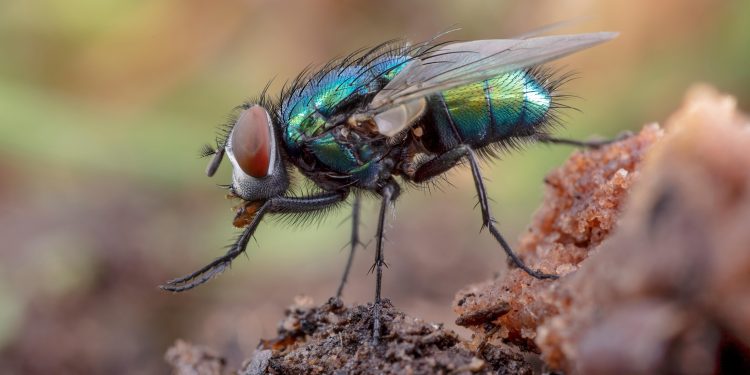U.S. Secretary of Agriculture Brooke L. Rollins unveiled a comprehensive five-pronged strategy last week to combat the spread of the New World Screwworm, drawing widespread praise from lawmakers and agricultural leaders who described the threat as potentially devastating to America’s livestock industry.
The plan centers on an $8.5 million sterile fly dispersal facility to be constructed at Moore Air Base in South Texas, marking a significant federal investment in preventing the destructive parasite from crossing into the United States from Mexico.
Bipartisan Support Emerges
The announcement has generated rare bipartisan support, with officials from both parties emphasizing the urgency of addressing the threat before it reaches American soil.
“Texas is on the front lines of the threat posed by the New World Screwworm,” said Governor Greg Abbott. “Proactive measures like this dispersal facility are a critical step to ensure our state and nation are prepared to respond swiftly and effectively to this challenge.”
The facility will be located in Hidalgo County, following a proposal from Representative Monica De La Cruz (TX-15), who warned that without immediate action, “the New World Screwworm will devastate Texas livestock and wildlife.”
Historic Precedent at Moore Air Base
The choice of Moore Air Base carries historical significance, as the facility previously served as part of the nation’s screwworm eradication efforts in the 1960s. National Cattlemen’s Beef Association President Buck Wehrbein, a Nebraska cattleman, noted that the base “will be the cornerstone of our renewed fight against this parasite.”
Representative Tony Gonzales (TX-32), who introduced the STOP Screwworms Act and has led funding efforts through the House Appropriations Committee, called the facility opening “a huge step forward to eradicating the screwworm and protecting American livestock.”
Cross-State Concerns
While Texas representatives have been most vocal about the threat, lawmakers from neighboring states have also expressed support for the federal response. Senator Martin Heinrich of New Mexico praised USDA for “putting $8.5 million into a new sterile fly dispersal facility,” calling it “welcome news for New Mexico producers and wildlife.”
Senator Cindy Hyde-Smith of Mississippi emphasized the broader implications, stating that “the spread of the New World screwworm is a serious threat to the U.S. cattle and livestock industry if left alone.”
Industry Rallies Behind Plan
Agricultural organizations across the country have thrown their support behind Secretary Rollins’ strategy. Texas Farm Bureau President Russell Boening described the investment as “a critical step in protecting Texas livestock, wildlife and our food supply,” noting that the organization had made establishment of a domestic sterile insect facility “one of our highest priorities.”
The Texas Cattle Feeders Association and Texas & Southwestern Cattle Raisers Association both emphasized that sterile flies represent “the only known way to stop the reproduction and continued expansion of New World screwworm.”
Scientific Approach to Containment
The sterile insect technique involves releasing laboratory-bred sterile male flies to mate with wild females, preventing reproduction and ultimately reducing the pest population. Texas & Southwestern Cattle Raisers Association First Vice President Stephen Diebel noted that the approach provides assurance that Secretary Rollins is “following through on her early commitments to increasing production of sterile flies domestically.”
The strategy also includes enhanced surveillance, sampling, reporting, and treatment protocols designed to contain the screwworm in Southern Mexico before it can spread north.
Economic Stakes
Several lawmakers emphasized the economic implications of inaction. Representative Ronny Jackson (TX-13), who represents what he called “the largest cattle-feeding district,” warned that the screwworm “poses a serious threat to our cattle, economy, and food supply.”
Senator Ted Cruz noted that “Texas agriculture and livestock are a core part of the Texas economy, and they feed America and the world,” while pushing for Mexico to implement its commitments to eradication efforts.
Wildlife Concerns
Beyond livestock, the threat extends to wildlife populations. Ed Arnett, CEO of The Wildlife Society, expressed appreciation for the steps being taken “to maintain the availability of sterile screwworm flies to mitigate this critical issue for wildlife and livestock.”
Representative Vicente Gonzalez (TX-34) warned that if the pest reaches the United States, it “could wreak havoc on our economy and food supply chain.”
Moving Forward
The Tennessee Farm Bureau Federation praised USDA’s “swift action,” describing the five-pronged plan as enhancing “USDA’s already robust ability to detect, control, and eliminate this pest.”
As the screwworm threat has moved north from Panama into Mexico, agricultural leaders say the timing of the federal response is crucial. Texas Commissioner of Agriculture Sid Miller emphasized that “it’s critical we stay ahead of it,” noting that Texas has “historically been at the forefront of American agriculture.”
The facility is expected to significantly enhance U.S. capabilities to contain the screwworm threat while maintaining confidence in cattle and beef trade relationships between the United States and Mexico.




